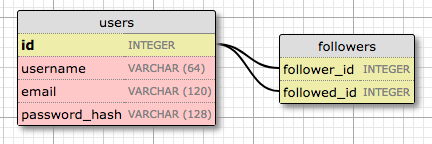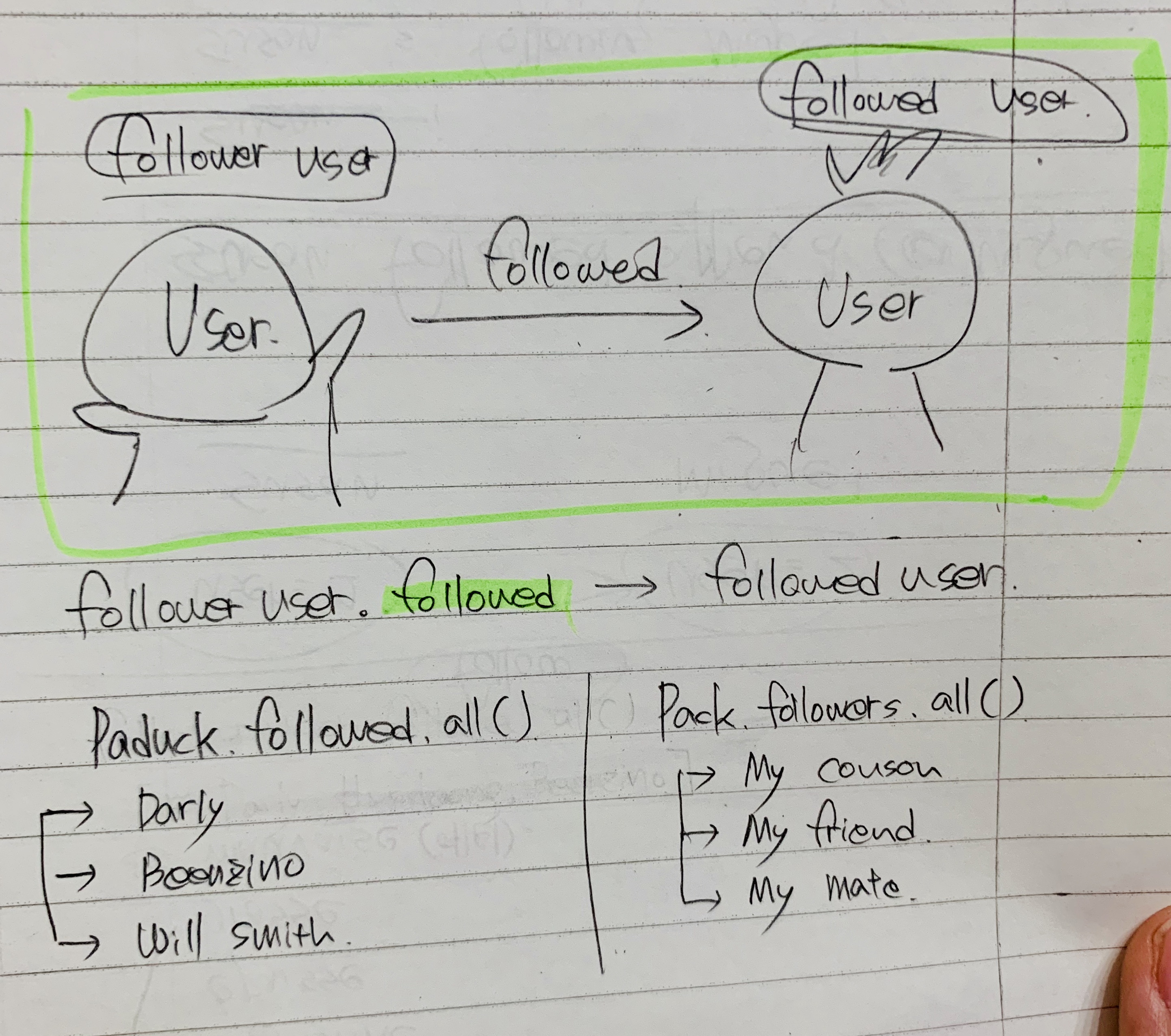Flask - Many to Many Relationship
background
- User can be a follow and be followed by another user!
- one user can follow many users, user can get many followers


Code - Make Many to Many relationship
- In models.py
follwersdoesn’t need to be a Model class since this is an auxiliary table that has no data other than the foreign keys, I created it without an associated model class.- if you want to know detail, check this original blog [https://blog.miguelgrinberg.com/post/the-flask-mega-tutorial-part-viii-followers]
followers = db.Table('followers',
db.Column('follower_id', db.Integer, db.ForeignKey('user.id')),
db.Column('followed_id', db.Integer, db.ForeignKey('user.id'))
)
class User(UserMixin, db.Model):
id = db.Column(db.Integer, primary_key=True)
username = db.Column(db.String(64), index=True, unique=True)
email = db.Column(db.String(120), index=True, unique=True)
password_hash = db.Column(db.String(128))
posts = db.relationship('Post', backref='author', lazy='dynamic') # post.author ==> user instance
about_me = db.Column(db.String(140))
last_seen = db.Column(db.DateTime, default=datetime.utcnow)
followed = db.relationship('User',
secondary=followers,
primaryjoin=(followers.c.follower_id == id),
secondaryjoin=(followers.c.followed_id == id),
backref=db.backref('followers', lazy='dynamic'), lazy='dynamic')
- Paduck followed Darly
- Darly has follwers Paduck
- To follow
fan.followed.append(star) - To unfollow
fan.followed.remove(star) - To check followed
fan.followed.all() - To check following
star.followers.all()
>>> a = User.query.get(1)
>>> a
<User Paduck>
>>> b = User.query.get(2)
>>> b
<User susan>
>>> a.followed.append(b)
>>> db.session.commit()
>>> a.followed.all()
[<User Darly>, <User susan>]
>>> b.followers.all()
[<User Paduck>]
>>> a.followed.remove(b)
>>> db.session.commit()
>>> a.followed.all()
[<User Darly>]
>>> b.followers.all()
[]
>>>
Code - Make it simple by create model functions
def follow(self, user):
if not self.is_following(user):
self.followed.append(user)
def unfollow(self, user):
if self.is_following(user):
self.followed.remove(user)
def is_following(self, user):
return self.followed.filter(
followers.c.followed_id == user.id).count() > 0
>>> a = User.query.get(1)
>>> b = User.query.get(2)
>>> a.is_following(b)
False
>>> a.follow(b)
>>> db.session.commit()
>>> a.is_following(b)
True
>>> a.unfollow(b)
>>> db.session.commit()
>>> a.is_following(b)
False